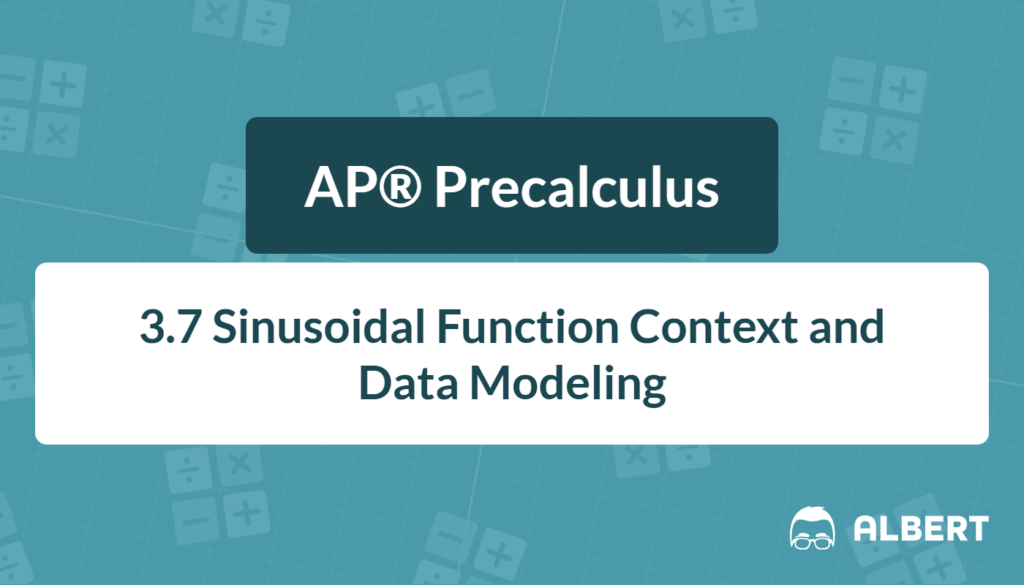What We Review
Introduction
Sinusoidal functions, like sine and cosine waves, are at the heart of understanding periodic phenomena—those that repeat at regular intervals. Section 3.7 Sinusoidal Function Context and Data Modeling in AP® Precalculus focuses on applying sinusoidal functions in real-life scenarios. These functions are vital in various fields, such as physics, engineering, and even economics. This article covers the essential aspects of sinusoidal functions, focusing on amplitude, period, vertical shift, and phase shift. By the end, understanding these properties will assist in modeling and interpreting real-world data.
Understanding Sinusoidal Functions
Sinusoidal functions take the form:
f(x) = a \sin(b(x - c)) + d or f(x) = a \cos(b(x - c)) + d
…where:
- The amplitude is ( a ).
- Period is affected by ( b ).
- The phase shift is given by analyzing ( c ).
- ( d ) is the vertical shift.
Let’s dive into specific contextual scenarios to help us apply the skills from 3.7 Sinusoidal Function Context and Data Modeling.
Modeling Daylight Hours Over a Year

Scenario:
In Chicago, the number of daylight hours varies throughout the year in a periodic manner. The longest day of the year occurs on June 21, when there are 15 hours of daylight. The shortest day occurs on December 21, with 9 hours of daylight. Assume the number of daylight hours follows a sinusoidal pattern over the course of a year.
Question:
Write a sinusoidal function to model the number of daylight hours as a function of time t , where t represents the number of days after January 1st.
Step 1: Determine the Period and Frequency
Since the daylight cycle repeats annually, the period is 365 days. The frequency is given by:
f = \frac{1}{\text{period}} = \frac{1}{365} \text{ cycles per day}
In terms of a sine function, the period is related to B in \sin(Bt) by:
B = \frac{2\pi}{\text{period}} = \frac{2\pi}{365}
Step 2: Find the Amplitude and Vertical Shift
The amplitude is half the difference between the maximum and minimum values:
A = \frac{\text{max} - \text{min}}{2} = \frac{15 - 9}{2} = 3
The vertical shift (midline) is the average of the max and min values:
D = \frac{\text{max} + \text{min}}{2} = \frac{15 + 9}{2} = 12
Step 3: Determine the Phase Shift
The maximum daylight occurs on June 21, which is 172 days after January 1. Since a standard sine function reaches its maximum at B(t - C) = \frac{\pi}{2} , we set up:
\frac{2\pi}{365} (172 - C) = \frac{\pi}{2}
Solving for C , we get: C = 80.75
Step 4: Construct the Sinusoidal Model
H(t) = 3 \sin\left(\frac{2\pi}{365} (t -80.75)\right) + 12
The function H(t) represents daylight hours. Time, t , is the number of days after January 1. 3 is the amplitude. \frac{2\pi}{365} represents the frequency. The phase shift is 80.75. Finally, 12 is the midline (vertical shift).
Step 5: Interpret the Model in Context
This model is only valid for a single year. Furthermore, it cannot be used for long-term trends in climate change. However, it predicts daylight hours accurately for any day in the year.
Let’s analyze another example to help us master the skills in 3.7 Sinusoidal Function Context and Data Modeling.
Example 2: Modeling a Ferris Wheel Ride

Scenario:
A Ferris wheel at an amusement park has a diameter of 40 feet and takes 60 seconds to complete one full revolution. A rider starts at the lowest point (10 feet above the ground) and moves in a sinusoidal pattern as the ride rotates.
Question:
Write a sinusoidal function to model the rider’s height above the ground as a function of time t , where t is measured in seconds.
Step 1: Determine the Period and Frequency
The Ferris wheel completes one full cycle every 60 seconds, so: \text{Period} = 60 \text{ sec}
The frequency is:
f = \frac{1}{\text{period}} = \frac{1}{60} \text{ cycles per second}
The B value in the sine function is given by:
B = \frac{2\pi}{\text{period}} = \frac{2\pi}{60} = \frac{\pi}{30}
Step 2: Find the Amplitude and Vertical Shift
The amplitude is half the diameter of the Ferris wheel:
A = \frac{40}{2} = 20 \text{ feet}
The vertical shift (midline) is the center height of the Ferris wheel:
D = 10 + 20 = 30 \text{ feet}
Step 3: Determine the Phase Shift
The rider starts at the lowest point at t = 0 , meaning the sine function should be shifted accordingly. So, the standard sine function starts at the midline, but this function starts at the minimum. A sine function reaches its minimum at t = 0 when shifted by C = -\frac{\pi}{2B} :
C = -\frac{\pi}{2} \times \frac{30}{\pi} = -15
Step 4: Construct the Sinusoidal Model
h(t) = 20 \sin\left(\frac{\pi}{30} (t - 15)\right) + 30
The function h(t) represents the rider’s height above the ground. t is the time in seconds, while 20 is the amplitude (radius of the wheel). \frac{\pi}{30} represents the frequency, -15 is the phase shift, and 30 is the vertical shift (center height of the wheel).
Step 5: Interpret the Model in Context
This function only applies while the Ferris wheel is running. However, it predicts the height of a rider at any moment within a single ride cycle. Also, it does not model motion after the ride stops.
Quick Reference Chart
| Term | Definition |
| Amplitude | Maximum displacement from the middle. |
| Period | Length of one full cycle of the wave. |
| Vertical Shift | Vertical movement of the function. |
| Phase Shift | Horizontal shift from the usual start of the cycle. |
| Frequency | Number of cycles per unit time. |
| Sinusoidal Regression | A method to fit a sinusoidal model to data. |
Conclusion
Sinusoidal functions offer powerful tools to model repetitive data patterns across numerous disciplines. Recognizing characteristics such as amplitude, period, and phase shifts enhances prediction and interpretation. Practicing identification will strengthen these crucial skills and alleviate obstacles in real-world data analysis.
Sharpen Your Skills for AP® Precalculus
Are you preparing for the AP® Precalculus exam? We’ve got you covered! Try our review articles designed to help you confidently tackle real-world math problems. You’ll find everything you need to succeed, from quick tips to detailed strategies. Start exploring now!
Need help preparing for your AP® Precalculus exam?
Albert has hundreds of AP® Precalculus practice questions, free response, and an AP® Precalculus practice test to try out.









